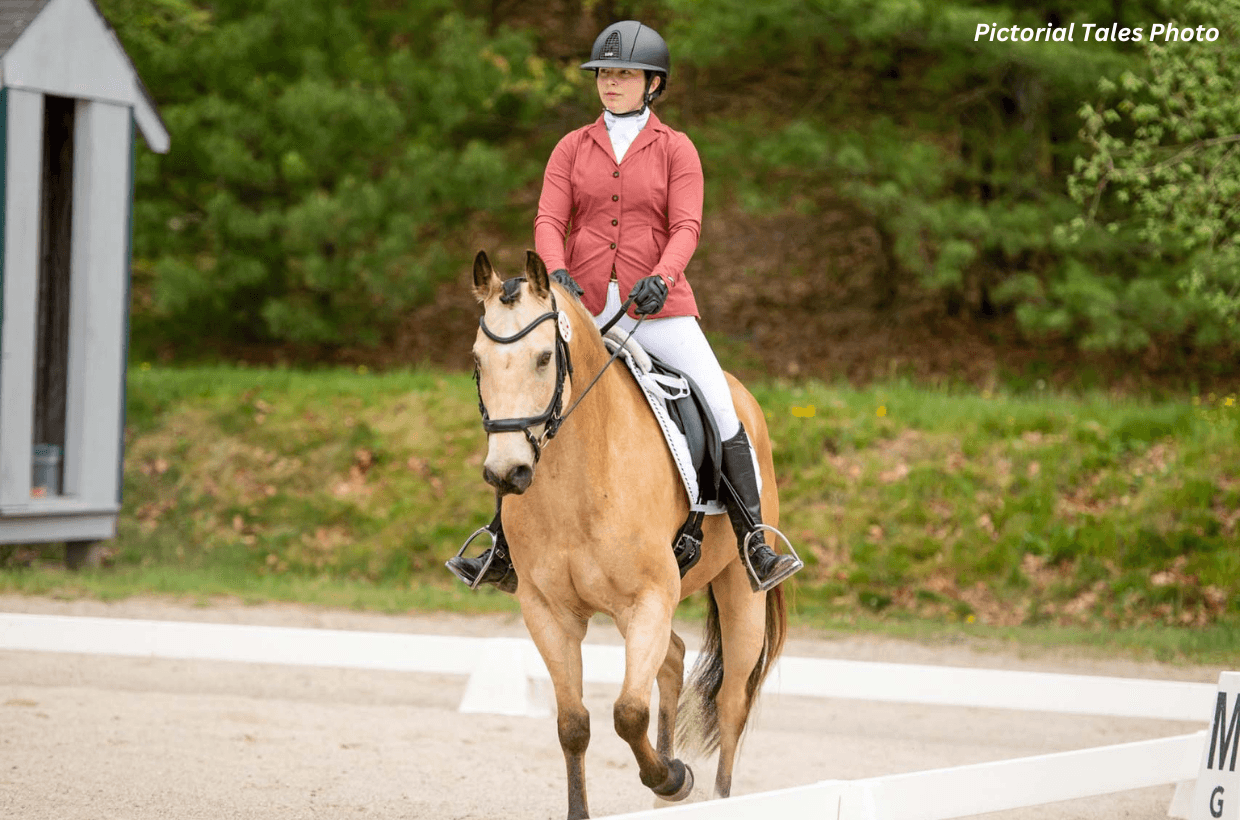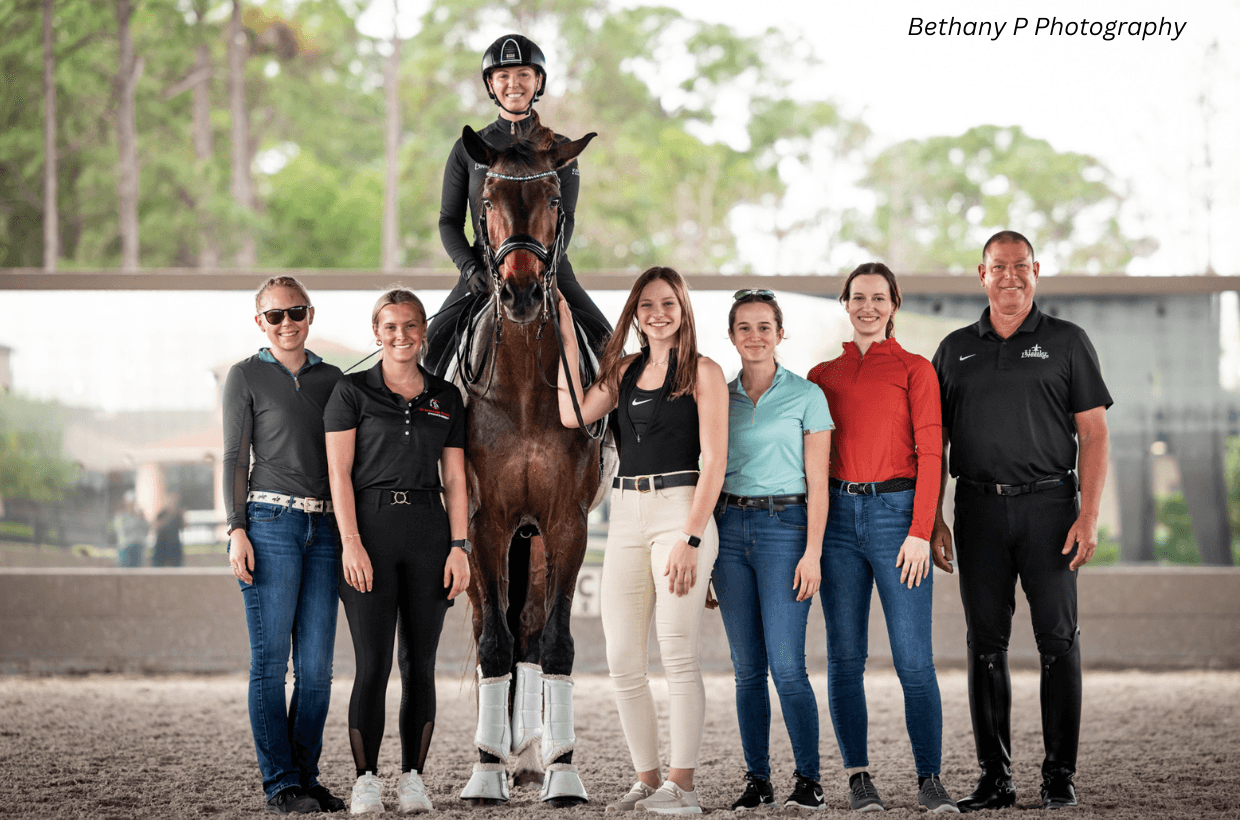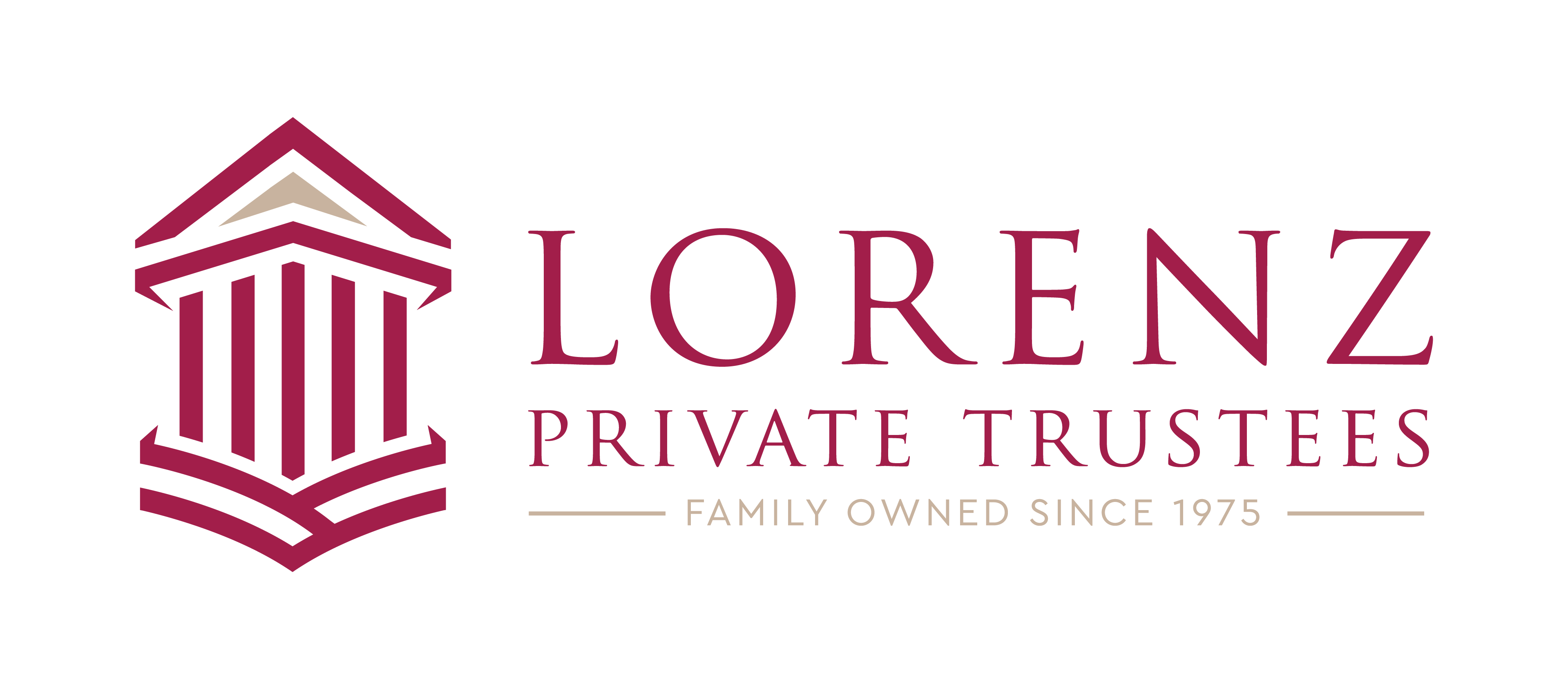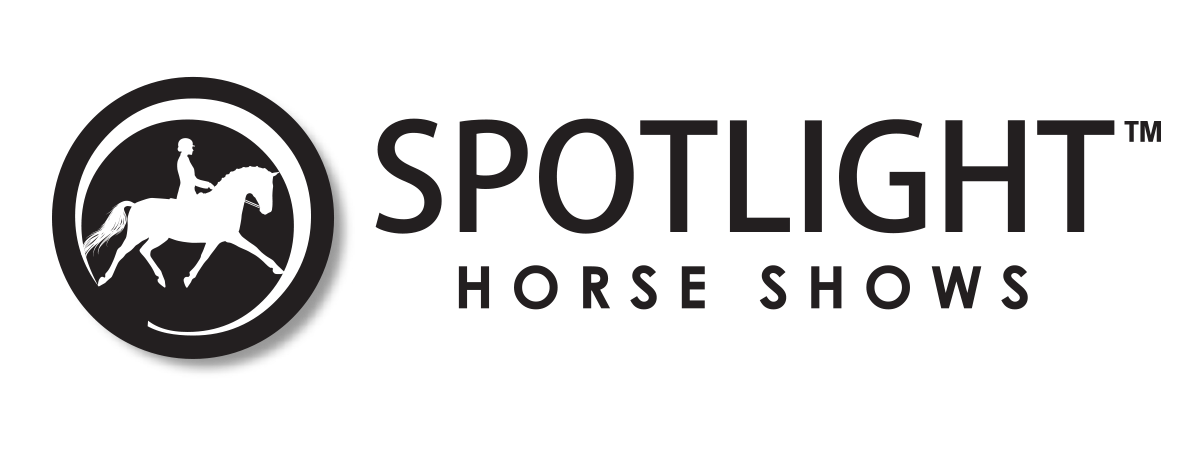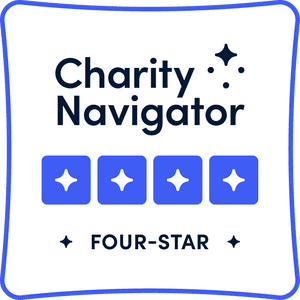Aneesa Romans: Region 1
My training plans changed when the horse I originally intended to ride during my Gifted Scholarship training time was sold. But I started leasing a different horse this spring and I was thrilled that The Dressage Foundation graciously allowed me to use the grant to build a partnership with him. In mid-April, I picked up JD from his farm in New Jersey and unloaded a couple hours later at my trainer’s barn across the river in PA. JD is a handsome, easy-going dark brown 9-year-old Swedish gelding with solid training through Third Level. I competed at Third Level a couple times last summer, but hadn’t kept up with it over the winter so I knew my timing and feel for the level would need a major tune up.
Our training week began three weeks after JD arrived. I wanted to give him ample time to settle in before starting into full work. Happily, he transitioned to the new routine easily, making friends in turnout, and quickly charming the barn staff with his good looks and pocket personality. My big goal for the week was for JD and I to get to know each other better with the help of my trainer, Ange Bean. I also wanted to come away with a good assessment of our strengths and weaknesses from a competition standpoint. I plan to compete with JD in the summer, and while we could do each of the individual movements, we had not yet tried to put them all together. There is always an added layer of stress when it comes to riding with the poise and polish required to show well. It’s important for me to feel like we have established enough mutual trust to confidently head down centerline before I start filling out entry forms.
Lessons began on Sunday with a focus on my seat and position. The horses aren’t the only ones who need increased suppleness, bend and balance to improve their performances! I had a lunge lesson on Ange’s awesome horse Harry. He has big, active gaits and it was a challenge to stay open in my hips, so all that power could travel through his whole topline. I did a series of exercises to get control (or at least awareness) of my wayward hips and shoulders. Ange keyed in on a problem of collapsing at the waist, especially to the left, making my left leg ineffective as a bending aid. It was also apparent that my elbows had gone rogue and liked to flap about instead of maintaining their dignified position above my hips. Luckily, Ange had a surefire way to address that. Soft foam balls tucked between my torso and upper arms, and the mandate of providing baked goods anytime one fell out.
In my next lesson I rode tall in the waist and JD’s quieter connection made it clear that he appreciated the steadier elbows as well. We rode through different exercises with an eye towards which ones might carry-over to a show warm-up routine. The idea is to select the type of work that, based on JD’s response, produces relaxation, improves the quality of the gaits, and prepares him for specific test movements without over-taxing his (or my) stamina. Also known as, “don’t leave your best horse in the warm-up.” I had been having trouble with straightness and collection when schooling on my own. The purpose of Third Level emphasizes engagement and self-carriage. JD was perfectly happy to do all the movements for me, so long as I let him lean on me and overlooked some crookedness. JD is naturally pretty flexible, so Ange used that and coached us through yoga flow-like exercises where we moved between shoulder-in, travers, and renvers till we hit upon the optimal alignment for each gait. The test was if we could smoothly shift in and out of the medium paces within that posture. She also made me think about adjusting the tempo so JD spent more time on his hind legs carrying rather than pushing out behind.
Tuesday I was awake and out the door first thing in the morning for an entire day at the barn! I work a full-time day job and usually ride at night. Having the Gifted training grant allowed me to take time away from the office, worry-free, and spend a “day in the life” with my trainer. I was curious about how JD would feel after a full workout the night before. I know some horses really prefer their turnout time before going to the sandbox. He warmed up well and I could feel that the straightness work was carrying over from yesterday. Today’s lesson was about controlling the half pass. Ange wanted to try a similar idea of moving in and out of the movement on various lines to find the balance and tempo that allowed me to smoothly influence the sideways and forward components of the movement. It worked out alright in the trot. In the canter is where the fatigue of three days in a row caught up to us. JD got behind the aids and my reaction was to compensate by over-riding. Luckily, Ange spotted the problem right away and stopped us before it got worse. After a walk break, we ended the lesson with turn on the haunches practice. It still required JD to stay alive to my aids and made me focus on the balance and tempo for going forward with bend, but with far less muscle exertion.
JD got extra carrots and a bubble bath, and I quickly latched the gate and turned away after putting him out in the paddock so I wouldn’t have to witness the ensuing roll in the dirt. Notepad in hand, I spent the next couple hours watching my barn mates in their lessons. The weather was sublimely spring-like and the anticipation of a new show season was evident as everyone was talking about their goals for the year. I love how my trainer works hard to create and maintain a supportive environment despite the competitive nature of the sport. After lunch I excitedly hopped in the truck and rode down to Maryland to watch Ange ride with her coach, Scott Hassler. Ange is wonderful about taking techniques that she learns at lessons or clinics and bringing it back to the barn. Today was my chance to get a firsthand experience and it did not disappoint! Scott has a quieter style of coaching, but he doesn’t miss a thing. And he must have over a dozen different methods for each training challenge. It was all about keeping things light and almost playful while looking for techniques that the horse understood and could feel secure in. Breaking it down to the basics, finding the middle ground, and letting the horse tell you their path forward.
Wednesday is Ange’s day off, and I’m a huge fan of doing cross training with my horses. So JD and I played over poles. I knew that he had experience free jumping, and I’m comfortable jumping myself, having competed over fences with my last horse. We kept it small and JD was bold and honest. It was easy, fun, and a super confidence builder!
Friday we were back in the dressage arena under Ange’s watchful eye. The plan was to prep for tomorrow’s full test ride through by revisiting the warm up exercises and adjusting as needed. Ange encourages all her students to have a written warm up plan with each exercise timed out to the minute, and to review it after each show with notes about how the ride went. It gives you a history of which exercises worked or didn’t for different situations. The warm up is structured into three phases that generally mirror the progression of the training pyramid. The familiarization phase is meant to check in on the horse’s rhythm and relaxation. To get a feel for what he’s bringing to the table that day. It’s also where I bring awareness to my position and the other components that go into improving the rider collective score. For JD, who tends to be pretty low-key, I rode all three gaits on a long-ish rein, paying attention to his reaction in the transition strides as that’s where any tension or restriction would be most obvious. Next, the gaits phase moves into impulsion and connection. Tuning the horse physically and mentally for acceptance of the aids. I put JD together and did our yoga-flow from Sunday with frequent bend changes followed by transitions within the gait till we maintained a consistent tempo. Finally, the movements phase explores how to efficiently achieve the correct alignment and degree of collection to perform the test with ease and fluidity. I chose the half pass work from Tuesday, really focusing on the accuracy and clearly beginning and ending the movement with control of the shoulders instead of drifting back to the track. Ange timed everything for me and chimed in often, but also gave me space to work my plan. It suits me well since she isn’t always there at shows with me. I totally trust my trainer, but it can’t be a substitute for trusting myself and my horse.
On the last day it was time to see how well JD and I could get the puzzle pieces to fit together. Ange would read out the test for me and a friend was nice enough to come video tape. Once I get past the initial cringe, I can learn a bunch by watching myself riding. We tend to be our own worse critics, and while that’s still very true for me, I have noticed that my objectivity improve since I started participating in USDF’s L Education Program. I had gone over my warm up plan the night before, and mentally rehearsed the test all morning. JD is a quick study and I noticed that he was starting to anticipate my aids. So, I made a mental note to work in a bit more variety to maintain his focus. I felt myself get nervous with the camera on me, but JD was steady and reassuring. We confidently executed the movements, and while the crookedness was still obvious at times, I was thrilled that he was consistently staying with my aids instead of taking over or falling behind and losing all of the self-carriage.
The overall improvement in our communication throughout the week was very rewarding. It confirmed that we had met my goal of laying the foundation for a successful partnership. I now feel comfortable with our skills as a team and I can move forward with setting realistic, achievable goals for show season. Also, the extra time with JD before and after lessons gave him a chance to patiently teach me very important lessons such as the exact location and pressure for optimal wither scratches, the best spots for hand grazing, that mints are better than sugar cubes, and that he is pretty sure I mean let’s go snack around the fields when I say let’s go hack. We’re still sorting that last one out, but JD and I do agree on a big “thank you” to Carol Lavell and The Dressage Foundation for this wonderful opportunity!










